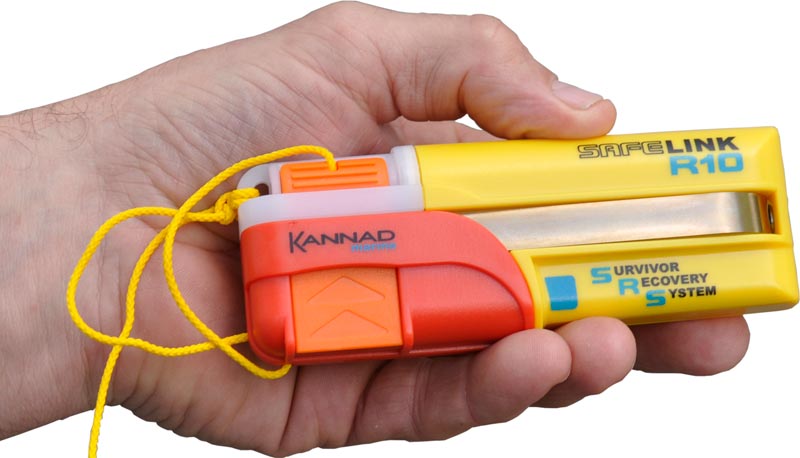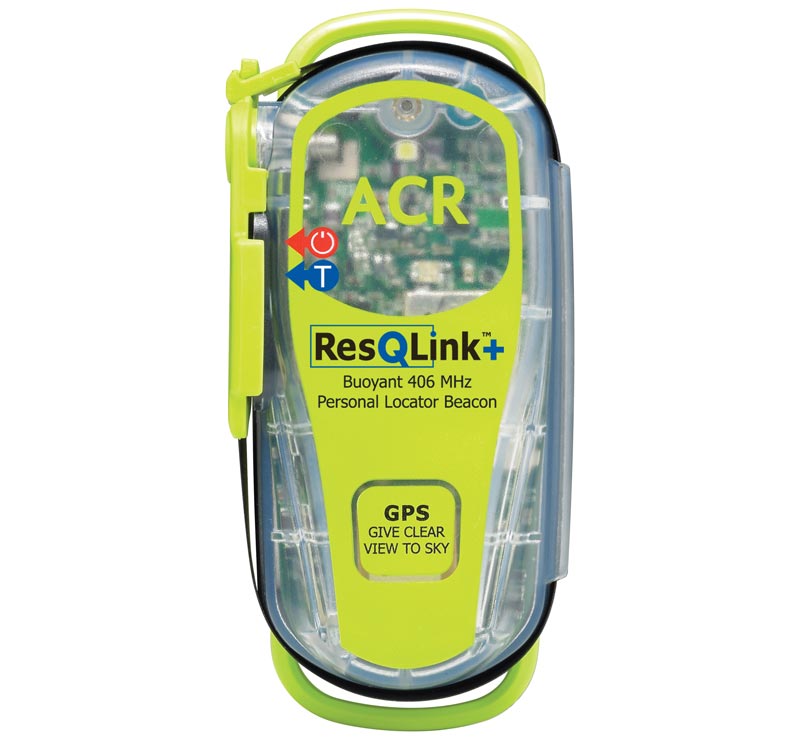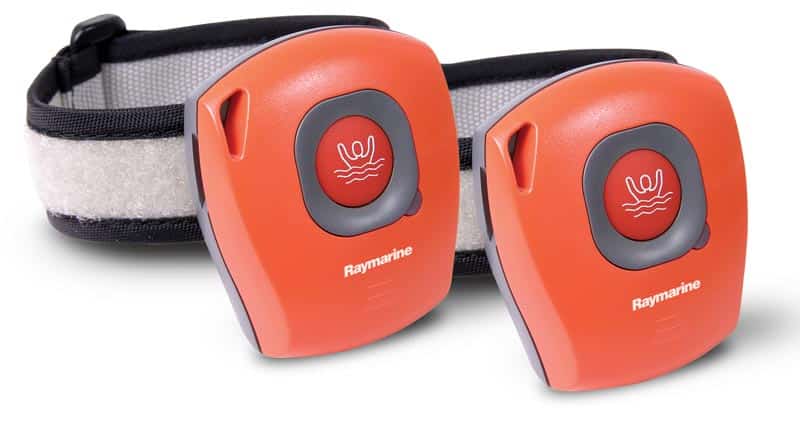
McMurdo/Kannad innovative personal AIS beacon
When there is fishing to be done, the last thing on anyone’s mind is getting rescued, but when an emergency occurs, it’s preparedness that allows you to sort out trouble quickly and turn a mishap into a short story.
Safety and rescue systems run the gamut from personal devices that interact with a single vessel, alerting the crew that someone has gone overboard and needs to be retrieved, to equipment that launches a worldwide search that may last for days. In the end, it is all relative.
“The best beacon is the one you have with you when you need it,” says Chris Wahler of ACR Cobham, a leader in marine rescue beacons and equipment.
Open Systems
Let’s look at the big picture first. For fishing boats, the gold standard in general is an EPIRB; this device allows a vessel to send an SOS to the international COSPAS-SARSAT satellite system and initiate an at-sea rescue. For individuals, a PLB, or personal locator beacon, does the same thing, but it is registered to a person rather than a boat. A PLB is a particularly good idea as part of your own basic kit when you are away from your boat. Whether you are aboard an unfamiliar boat domestically or are traveling far and wide to fish, this little gizmo will get you found anywhere in the world, on land or at sea.
Just recently, ACR Cobham released its newest PLB, the floating ResQLink+ ($299). It broadcasts a 407 kHz signal to the worldwide COSPAS-SARSAT satellite system, issues a 121.5 MHz signal for close-range RDF (radio direction finder) tracking and sends a GPS position.
McMurdo also offers a diminutive PLB, the FastFind 210 ($249).
Another category of rescue device that has gained popularity over the last couple of years is satellite
messengers.
Spot Satellite GPS Messenger ($169.99) is the original check-in machine. It delivers an e-mail message (such as “I’m OK” or “going to be later than expected”) that you pre-configure on the website, findmespot.com, or sends a satellite SOS when you are in trouble. The Spot Connect ($169.99) has the same functionality but allows you to create custom text messages when it’s Bluetooth-linked to a smartphone.
DeLorme’s inReach ($249.95) also sends preloaded messages, as well as a global SOS, and links up with either an Android smartphone or a DeLorme Earthmate PN-60w GPS navigator ($349.95) for custom messaging.
Both the Spot and DeLorme systems require an annual subscription plan, but they allow a range of services.

Closed Systems
Another class of gear comprises man overboard (MOB) devices, which provide an alert when a portable transmitter, or fob, hits the water. A receiver at the helm monitors the signal and marks the chart plotter. Such systems are typified by the Raymarine LifeTag ($695 with two fobs). It integrates with a boat’s Raymarine nav system.
Other manufacturers offer similar systems. MOBi-lert 720i ($899 with two transmitters), by Mobilarm, can be NMEA 0183-linked to compatible GPS chart plotters.
The latest in the MOB class is an AIS transmitter that puts an icon on enabled chart plotters and receivers. McMurdo’s SafeLink R10 provides position, distance and bearing on the screen. As with vessels, the AIS identifier is an MMSI number. In the case of rescue devices, a 970 prefix identifies a person instead of a boat. Garmin, Raymarine and Furuno already display a distinctive MOB icon to distinguish a rescue case from a ship.
McMurdo/Kannad is the only company producing the transmitters, and these are awaiting FCC approval for sale in the United States. Additional products aren’t far behind.
“We think the technology is a good way to go,” says ACR Cobham’s Wahler. “When we look at adoption rate for leisure vessels with interfaced DSC radio, MMSI and GPS, we don’t see a great amount of adoption domestically [which would be necessary for a successful open system]. But we think it is great for a closed system, and we will be there with some sort of combination device.”

Sign Up
Each signaling system that interacts with the outside world — whether a satellite messenger, an EPIRB, a PLB or simply an MMSI number for a VHF radio — requires registration. This is essential if the rescue device is going to do its job. Registration can be done by mail or over the Internet. Don’t put it off. Instructions come with the gear you buy. In most cases, online information can be edited at any time. Before a big trip, for instance, you can go online and add your destination and plans to create a de facto float plan. Then if you have to push the SOS button, rescuers will have that much more information about your whereabouts. Be sure to change back the info when you get home.









